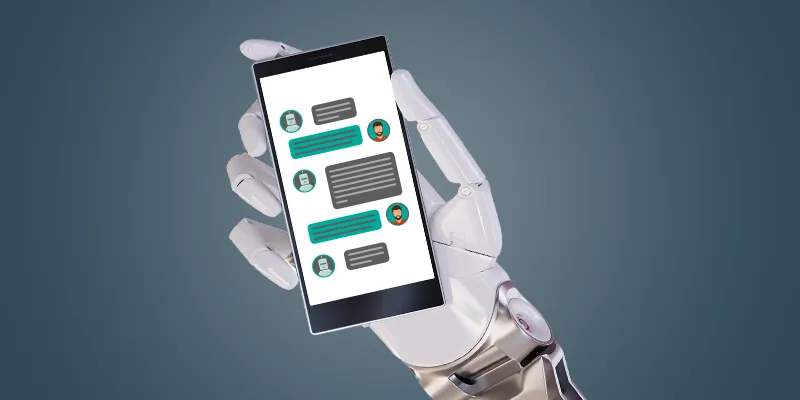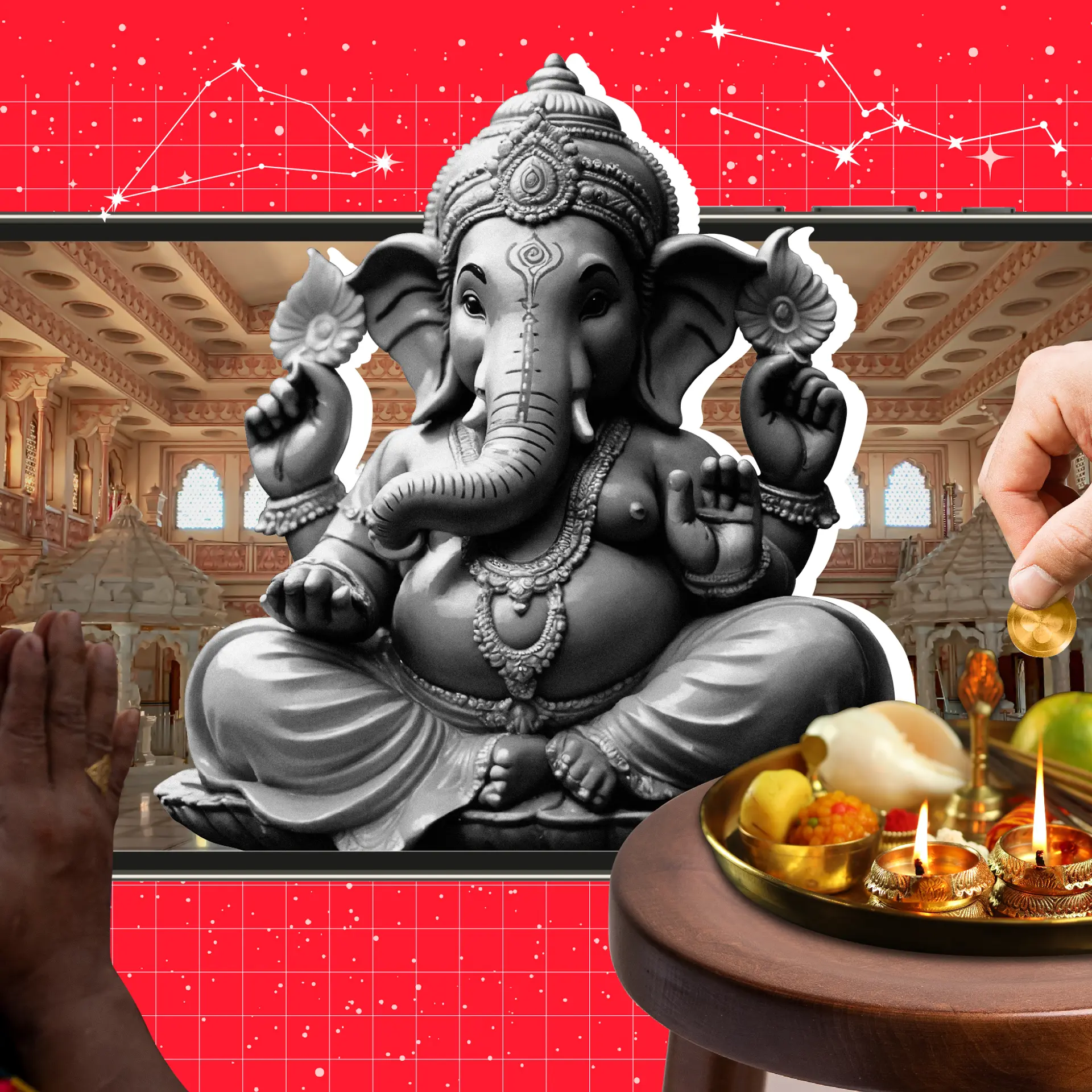The state of chatbot market in India in 2017
Globally, the chatbot market has seen explosive growth since 2015, growing at 35 percent CAGR.
Chatbots, which began as a fairly unknown niche concept in technology, are now turning into a necessity for mainstream businesses. Read more about all of this in our detailed chatbot market report, right here.
Globally, the chatbot market has seen explosive growth since 2015, growing at 35 percent CAGR. Reports estimate $8 billion in annual savings from chatbots, with 80 percent of businesses considering implementing them. Big advances being made by the big five — Facebook, Google, Microsoft, Apple, and Amazon — today jostle for headlines with the innovations being led by nimble startups.

However, one of the questions we ask ourselves regularly is where does India lie in this journey? Here are my thoughts, having seen the industry closely and been a part of it since its inception.
Chatbots: India’s global tech play
From industrial revolution to mobile telephony and the internet revolution, India has traditionally been a late adopter of advanced technologies. However, when it comes to chatbots, India has been on par with the best, right from the start. The ingredients were already in place: a large, mobile-enabled, messaging-friendly customer base, expertise in machine learning and artificial intelligence and proactive entrepreneurs solving large, unsolved use cases with the technology evolution at the helm.
India is a key player in the chatbot market today. And a few India-developed chatbots are well-positioned to compete, not just in the country, but across global markets. While customers are looking for outcomes such as digital assistance, content and improved experience with chatbots, firms need solutions for aspects of the market. Let’s see how.
Chatbot brand wars
Big brands in India including e-commerce companies, banks, insurance firms, travel companies and entertainment firms have already started implementing chatbots. The earliest and the most obvious benefit they aim for is improving engagement across the entire customer lifecycle. Apart from that, some are looking at conversational commerce through chatbots or being able to provide the right personalised content. A snapshot of some of the enterprise chatbots live in the market today:
In the banking sector
State Bank of India's SIA chatbot is aimed to handle customer queries and guide customers through retail products and services.
HDFC Bank's EVA was launched to provide conversational experience to customers across digital platforms. Customers can access product details, fees, application processes, branch IFSC codes, and other such information.
ICICI Bank's iPal offers help on FAQs, paying bills, fund transfers, recharges and new feature discovery. It’s integrated with the search feature on the website and queries are routed to human operators, if needed.
In the insurance sector
Bajaj Allianz's Boing helps customers register claims, get a soft copy of their policy, check the policy status, locate insurance branches and networked hospitals.
Birla Sun Life's bot is expected to promote awareness, instantly generate a quote, register a claim, and help customers understand their policies better.
PNB Metlife's bot Dr. Jeevan is expected to educate customers on critical illnesses — cancer and heart failure — with interactive videos and personalised quotation. It’s available on Facebook messenger.
In the e-commerce sector
Housejoy’s omni-channel chatbot enables booking of services, raising complaints, making payments and much more.
Lenskart uses its bot for order tracking, query logging and for assisted product discovery.
Yatra’s bot helps customers search and book flights directly through FB Messenger.
Meru Cabs' messenger bot responds in real time with the cab details and the chauffeur's mobile number once the customers verify their booking needs.
Chatbots that are direct-to-consumer
The Tracxn startup database lists over 100 chatbot startups in India as of 2017. These are the innovators and challengers. But what problems are they solving for customers? From healthcare to education to fashion to law, we see new chatbot use cases that are being developed by innovative tech companies every day. While Haptik aims to be an all-in-one personal assistant, we also see firms emerging such as Niki.ai (digital assistant), Fynd (Fashion apparel chatbot), Myprivatetutor (tutor finder), Lawrato (legal searches), Wysa (mental health tracker) to name a few. These innovators are helping to bring chatbots closer to the customers. While it is fair to say that none of these have really broken out, it must be noted that its less to do with their ability to get things done, but more down to the macro market competitive scenario in India. I am confident that by 2020 we will see a breakout consumer first chatbot use case for India.
The brigade of the bot builders
Building a chatbot is not like setting up slack for your company. It takes time, the right technology, and design expertise to build something that actually works. And that’s where the chatbot builders step in. Armed with expertise in NLP and AI, some of these bot builders just provide the platform for bot-building self-help, a few build end-to-end customised solutions with mostly everyone providing detailed analytics and dashboards on the usage and performance of chatbots.
Companies, their USP and their notable clients
Haptik's UX design focus structured bots has clients such as Coca-Cola, Housejoy, Tata Docomo.
Senseforth has ready to use bots across 12 use cases for clients such as HDFC Bank, ICICI Lombard.
Gupshup provides a template bot-builder to clients such as Flipkart, Tata Sky, Unilever.
Surbo.io's USP is multi-lingual support for clients such as Bajaj Finserv, Aviva.
Avaamo's USP is security and flexible deployment. Its clients are Tally, Aircel, Reliance Securities.
Active.ai has expertise in core banking. Axis Bank is one of its clients.
Jubi.ai specialises in conversational commerce. Its clients are Godrej, Reliance Mutual Fund.
Chatbot platforms
One of the biggest reasons for the belief that chatbots will indeed be the next paradigm shift is that people are already spending most of their time inside messaging apps. These apps have all the ambition of turning into a platform like WeChat has done in China. While WeChat has built mini “applets” that are form based; apps like Messenger, Allo, Slack, Telegram, Kik are going down the bot route enabling chatbot driven tasks within existing group chats.
However, we all know that within the Indian context there is only one messaging app that matters today: WhatsApp. For the longest time, WhatsApp has been against any kind of service/support/advertising inside the app, but finally, we’ve been seeing a lot of movement in the last few weeks on what the company is calling ‘WhatsApp Business’. They are building platform tools to enable businesses to seamlessly communicate with users on WhatsApp, and also launching a separate business app along with payments over UPI. This is all extremely exciting news for the broader chatbot market. Enterprises and small businesses will need to have bots to respond to the scale of queries generated on WhatsApp. Companies that want to build applications directly for consumers will also now have a readymade distribution platform they can build these for.
Besides WhatsApp, local players such as Hike, Jio, Paytm and others have also expressed their desire to turn their apps into chat-based platforms. It will be an interesting next 12-24 months to see how these platforms evolve.
The bots that customers are speaking with
Across whatever type of chatbot being built by whomsoever, there is one thing in common: the similarity of the customer outcomes. Customers are looking for better outcomes. From assistance to shopping, and from information to the customer experience. This is the question they ask: does a chatbot make this easier? The basic premise of a chatbot is to make customers connect with a technology interface through a conversation. And hence the success of the chatbot depends on the success of that conversation. We believe that chatbots that have a clear and defined purpose, backed with a strong character and design will go a long way in driving such conversations, building loyal engagement, scaling up and actually making a difference.
Not all chatbots that are innovating today will be successful. But we find a few that are finding both customer loyalty and the scale of reach. While Haptik has over a million engaged users, HDFC Bank’s Eva claims to have interacted with over 500,000 unique users, with more 1 million unique conversations and more than 2.5 million queries addressed. Prepathon, a test-prep bot, has over 65,000 users and claims to answer over 10,000 questions every day. Meanwhile Fitcircle, a health and fitness chatbot, claims to have over 40,000 users, as does Niki. As market awareness builds further, a few such chatbots will stand out from the crowd.
Reaching the heart of India, in their own languages
The next billion Indians may not use their phones in the same way as the current 300 million odd smartphone users do. Many of them are not confident English speakers and are still getting used to messaging.
According to a 2017 study by KPMG and Google, English speakers are expected to grow by three percent over the next few years, till 2021. And non-English Internet users are expected to grow by 18 percent over the same period. Ninety percent of the new internet users are expected to be non-English speakers in the next few years. It’s an unsolved problem so far. And a big one. Can chatbots address it? It’s not as simple as providing a translation, on the go. Chatbot firms are trying to develop a solution by working with linguists alongside technologists developing verticalised vernacular conversations.
Just a conversation away
We foresee more awareness in the market and increased expectations from chatbots. The ones that will succeed will need to start with a strong design and a character of their own to be considered good conversationalists. They have to solve for a specific purpose and lead to improved customer acquisition, retention or efficiency outcomes. And the best Indian chatbots will not just show a better benchmark performance compared to comparable website and app interfaces, but also compete successfully, globally.
Early chatbot entrepreneurs of today will inspire more people to innovate, and solve increasingly large and difficult problems. In India, chatbots will need to go beyond English and cross beyond business to solve large social ills around healthcare, education, sanitation and more. And through this journey, as customers find value in the chatbot conversations, the stories will only grow. Till then, chatbots are just a conversation away, on our chosen messaging platform.
(Disclaimer: The views and opinions expressed in this article are those of the author and do not necessarily reflect the views of YourStory.)







